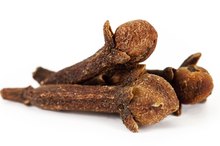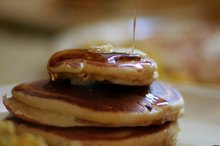Slippery Elm Bark & Kidney Failure
The use of herbs in animals, especially cats, is often contraindicated; however, slippery elm is one herb that has been found to be safe for use in both dogs and cats and may be especially helpful in the treatment of kidney disease in cats 1. Slippery elm bark has been used as an herbal treatment for centuries and is best known for healing mouth ulcers and sore throats, relieving coughs, and reducing esophageal and stomach pain 1. Because herbs can cause side effects, consult your veterinarian before giving slippery elm to your pet 1.
Slippery Elm
Slippery elm powder comes from the stringy, soft portion of the inner bark of the elm tree 1. The herb contains mucilage, a substance that forms a slippery coating on the lining of the digestive tract, protecting it from acids and inflammation. It is most easily used in its pure, powdered form to make a soft gruel, which is easy on the stomach of most animals and helps relieve the nausea, vomiting and constipation that may be present during kidney disease. Slippery elm will also help improve your cat’s skin and coat 1.
Antacid and Appetite Stimulant
Remedies for Nausea When Coughing
Learn More
Cats may need famotidine or another pharmaceutical antacid to control stomach acids and pain during kidney failure. Slippery elm acts in a similar manner to calm and soothe the stomach, protecting it from excess acids, avoiding the need to give your cat drugs 1. Additionally, slippery elm may prevent the formation of hairballs and stimulate your cat’s appetite during renal failure, helping her to regain some of her weight 1.
Availability
Slippery elm comes in powder, capsule and tincture form 1. The best way to use it for your pet is as a wild-crafted powder mixed with water. The pure wild-powdered herb should have no additives and not be mixed with other herbs. Tinctures may be mixed with alcohol and should be avoided. Capsules, too, may have other additives, which should be avoided.
- Slippery elm comes in powder, capsule and tincture form 1.
- The pure wild-powdered herb should have no additives and not be mixed with other herbs.
Slippery Elm Syrup
How to Make Ginger Preserve
Learn More
It may be easiest to administer slippery elm syrup to your cat, rather than trying to get her to eat the powder, which has a bittersweet taste 1. Making slippery elm syrup is generally most successful when using the pure powdered herb 1. To make the syrup, sprinkle 1 to 1 1/2 teaspoons of pure slippery elm powder into one cup of cold water 1. Stir until the powder becomes damp. Always moisten the powder before heating to avoid lumps. Boil the mixture in a glass or stainless steel pot for about three minutes, stirring continually. It will thicken to the consistency of heavy cream as it boils. Cool and store in a dark colored bottle in a cool, dark place for one day, or in the refrigerator for up to five days. The dose for a cat is 1/4 to 1/2 teaspoon, up to four times daily. The syrup may help soothe mouth ulcers as well as your cat’s entire digestive tract. If you have difficulties getting the cat to drink the syrup, dose her with an eye dropper or syringe. As a last resort, squirt or dribble the syrup on your cat’s paws to get her to take it.
- It may be easiest to administer slippery elm syrup to your cat, rather than trying to get her to eat the powder, which has a bittersweet taste 1.
- If you have difficulties getting the cat to drink the syrup, dose her with an eye dropper or syringe.
Related Articles
References
- Little Big Cat: Slippery Elm
- University of Maryland Medical Center: Slippery Elm
- Feline CRF: Tanya’s Comprehensive Guide to Feline Chronic Kidney Disease
- MedlinePlus. Slippery Elm. Updated November 5, 2017.
- Hawrelak, J. and Myer, S. Effects of two natural medicine formulations on irritable bowel syndrome symptoms: a pilot study. J Altern Complement Med. 2010 Oct;16(10):1065-71. DOI: 10.1089/acm.2009.0090.
- Langmead, L.; Dawson, C.; Hawkins, C. et al. Antioxidant effects of herbal therapies used by patients with inflammatory bowel disease: an in vitro study. Aliment Pharmacol Therapeu. 2002;16(2):197-205.
- Tinsley, G.; Urbina, S.; Santos, E. et al. A Purported Detoxification Supplement Does Not Improve Body Composition, Waist Circumference, Blood Markers, or Gastrointestinal Symptoms in Healthy Adult Females. J Diet Suppl. 2018 Jun 29:1-10. DOI: 10.1080/19390211.2018.1472713.
Writer Bio
Jean Bardot is a freelance writer and natural health practitioner. She started writing in 1994 and has contributed articles to publications such as "Similimum" and the "IFH Journal." She has a Bachelor of Science in public health from the University of North Carolina and a Master of Science in holistic nutrition from Clayton College of Natural Health.









